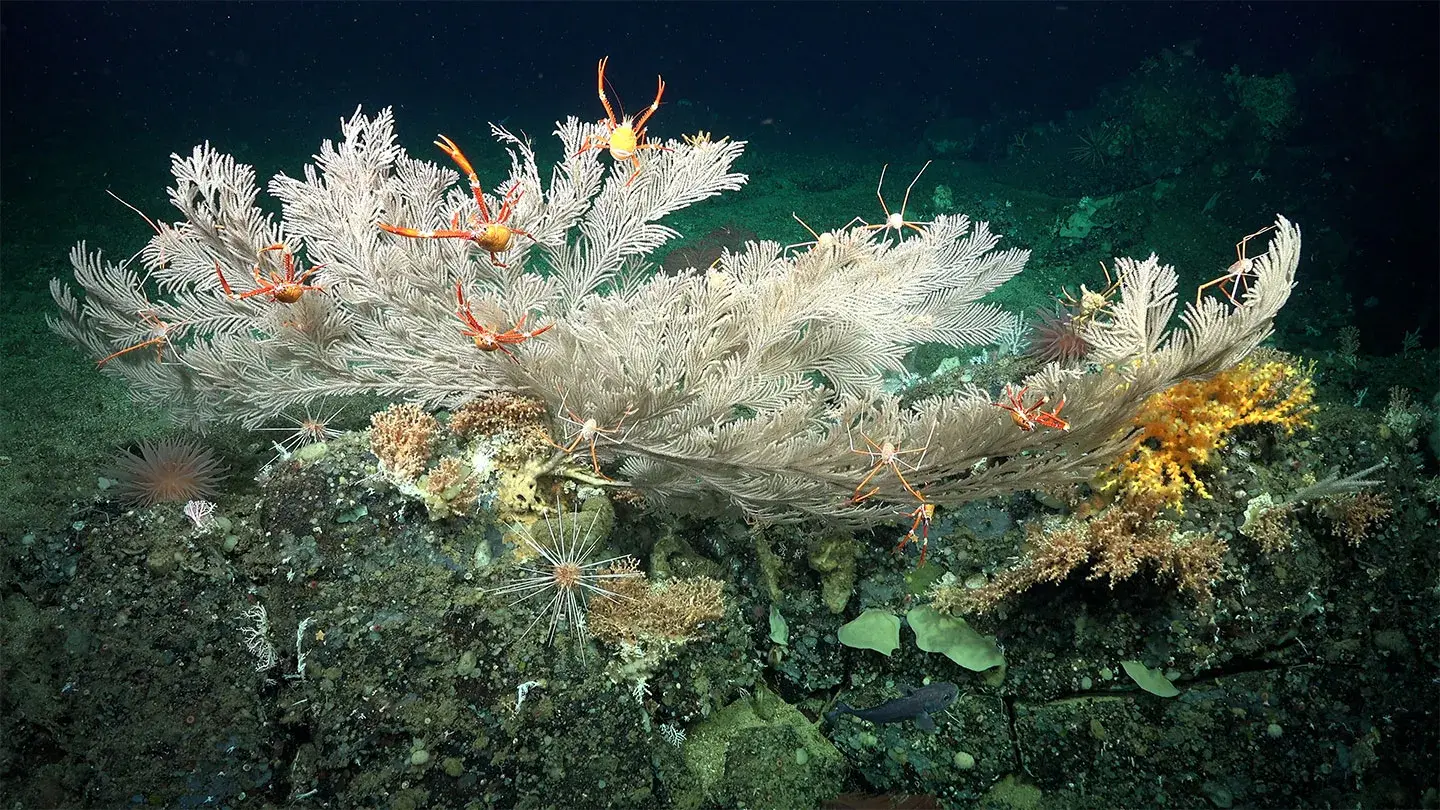Physical Address
304 North Cardinal St.
Dorchester Center, MA 02124

Beneath the crushing silence of the ocean’s darkest realms lie deep-sea coral gardens—spectacular structures sculpted over centuries, teeming with hidden life. Unlike their shallow-water cousins, these corals do not bask in sunlight. Instead, they flourish in frigid, nutrient-rich waters, often at depths beyond 200 meters, clinging to seamounts, ridges, and canyons. Despite being out of sight, they are now at the heart of global conservation concerns, as growing threats endanger these silent sentinels of the deep.
Deep-sea coral ecosystems are biodiversity hotspots. They host a wide range of marine species—many of them rare, ancient, and even undiscovered. Structurally complex and slow-growing, these corals provide vital habitat for fish, invertebrates, and microorganisms.
Ecological Value: These gardens act as nurseries for commercially important fish species, stabilize seafloor sediments, and serve as archives of climatic history through their skeletal structures.
Industrial trawlers scraping the seafloor destroy centuries-old coral frameworks in minutes. Unlike shallow reefs, deep-sea corals grow extremely slowly—often just millimeters per year—making recovery virtually impossible on human timescales.
Energy exploration and deep-sea mining disrupt sediment layers, release toxic pollutants, and damage coral habitats. Operations can also lead to accidental spills and long-term habitat degradation.
Rising CO₂ levels increase ocean acidity, which weakens coral skeletons and reduces their ability to build reefs. Simultaneously, warming deep waters push some species beyond their thermal limits.
Underwater cables, pipelines, and anchoring systems can unintentionally crush coral habitats, especially in areas without proper mapping and regulation.
Insight: Scientists have discovered damaged deep-sea coral habitats thousands of kilometers away from the nearest human population, showing how far-reaching industrial activities can be.
Source: https://www.protectedplanet.net
Protecting deep-sea coral gardens requires a multi-dimensional approach, blending science, technology, legislation, and international cooperation.
To protect, we must first discover. The depths of the ocean remain largely unmapped, but new technologies are changing that:
New Discovery: In 2020, NOAA scientists used ROVs to map never-before-seen deep-sea coral gardens in the Gulf of Mexico—an area once thought barren.
One of the strongest conservation tools is legal protection.
Breakthrough: The Southwest Indian Ocean Fisheries Commission recently closed over 1.3 million square kilometers of seafloor to destructive fishing—an unprecedented move for coral protection.
Conservation requires more than just scientific data—it needs political will and legal enforcement.
Example: In Canada, co-management between Indigenous Peoples and the government has led to protected areas that respect both ecological and cultural values.
While deep-sea coral recovery is painstakingly slow, restoration science is emerging as a hopeful frontier.
Real-World Trial: Off Norway’s coast, researchers have successfully transplanted small coral colonies onto artificial reefs made from volcanic rock, with signs of growth and species return.
While these corals are hidden from view, engaging the public is key.
Impact: More than 5,000 public submissions helped the UK government map and protect over 12,000 square kilometers of vulnerable deep-sea habitat.
Deep-sea coral gardens are nature’s ancient cathedrals—silent, majestic, and irreplaceable. They offer not only refuge to countless species but also clues to Earth’s past, potential medicines of the future, and insights into climate regulation.
Yet they face relentless threats from human activity and environmental change. Conservation is no longer optional—it is urgent, intricate, and collaborative. By combining cutting-edge science, robust policy, and global awareness, we still have a chance to preserve these irreplaceable ecosystems for generations to come.
Final Thought: In saving deep-sea corals, we are not just preserving marine life—we are defending the integrity of our planet’s most mysterious and resilient habitats.